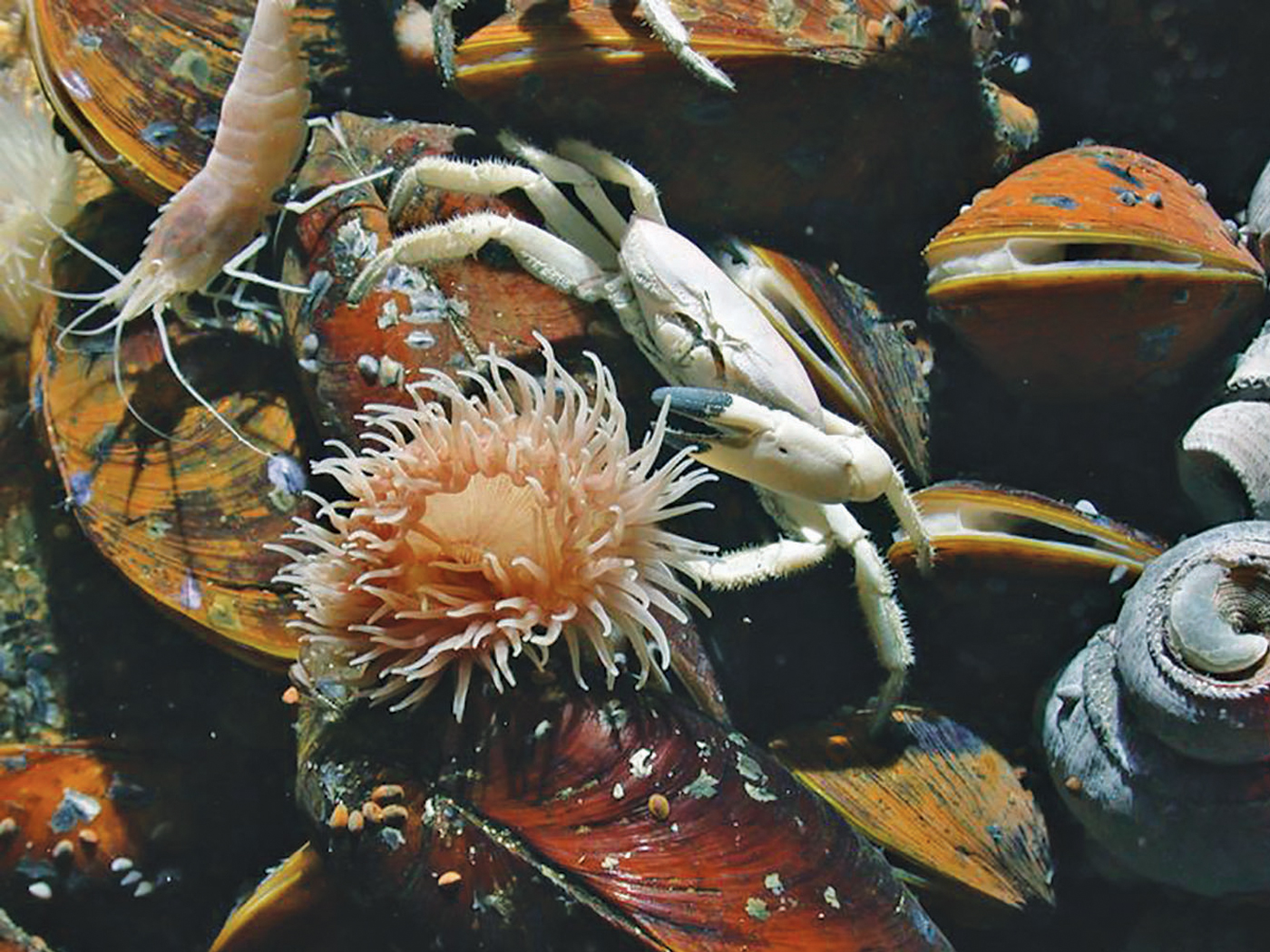Ever since Dr. Mary Schweitzer's 20051 discovery of preserved original dinosaur proteins and blood cells, many secular scientists have remained skeptical. How could dinosaur fossils retain original organic material after millions of years? A new ancient bird fossil reveals more unexpected original chemicals, adding fuel to the fierce debate within the scientific community.2
Following publication of her original paper,1 some of Schweitzer's critics claimed that what she actually found was contamination from lab analysis or contamination during field collection. Others claimed these proteins were really from modern bacterial activity, and they merely simulated original soft tissues.3
In response, Dr. Schweitzer and her colleagues performed more studies on the soft tissues in question.4,5 They even extracted collagen from a tyrannosaur leg bone and found a protein match of about 58% with bird collagen and 51% with frog and newt collagen—evidence these samples couldn't be from contamination. In further support that these are real dinosaur organic tissues, another study examined 89 amino acids extracted from a T. rex specimen, finding perfect matches with some modern animal proteins. Schweitzer's team has essentially demonstrated the "impossible." These dinosaur soft tissues are real!
This debate of original tissues versus bacterial microbes spilled into the study of microscopic pigment indicators, called melanosomes. Previously, scientists used powerful electron microscopes to examine the fibers from the tail of the theropod Sinosauropteryx, finding preserved melanosomes, which contain the pigment melanin.1 Different shapes of melanosomes produce different colors in today's animals. By comparing modern melanosomes to the ones found preserved in the fossils, scientists were able to speculate on the colors of this and other extinct animals. The melanosomes in the filaments/fibers of this Sinosauropteryx specimen indicate chestnut to reddish-brown bands along the tail and possibly the back.6
Another study found preserved melanosomes in feathers from the bird Archaeopteryx, showing a black color, somewhat like a modern crow or raven.7 An additional study of the feathered bird Microraptor also showed melanosomes indicating a black or dark blue color, but these melanosomes were more tightly packed, implying some degree of iridescence.8
More research on fossil ichthyosaurs, mosasaurs, and sea turtles supposedly 55 to 190 million years old has revealed actual preserved skin tissue and melanosomes that indicate a brown-black skin color.9
However, once again critics claim that these discoveries may not be melanosomes after all, but are just microbes that look like melanosomes, since both are similar in size and shape.10 One way to more clearly distinguish between melanosomes and microbes is to find keratin associated with the melanosomes. Keratin is a protein that surrounds modern feather melanosomes. The discovery of melanosomes and keratin together would resolve the dilemma. Since microbes are not found embedded in keratin, both the melanosomes and associated keratin would logically have to come from the fossilized (but not mineralized) bird.
To answer these critics, lead author Yanhoug Pan and co-authors, including Schweitzer herself, examined fossilized bird feathers from Early Cretaceous system rocks in China.2 They examined the feathers under an electron microscope, finding bundles of fibers that looked like keratin, but the team couldn't be sure from observation alone. So they conducted a series of chemical tests on the fiber bundles and the surrounding matrix, finding "strong evidence for the retention of original and phylogenetically significant [a sample substantial enough to compare with living animals] protein components in Eoconfuciusornis."2
Pan's team concluded, "Our work represents the oldest ultrastructural and immunological recognition of avian beta-keratin from an Early Cretaceous (~130-Ma) bird."10 In other words, the melanosomes and keratin found in this ancient bird are clearly real.
Their discovery again demonstrates the presence of preserved original proteins in fossils claimed to be many millions of years old. And yet, the authors offer no testable explanation for this preservation "miracle." Instead, they hypothesize that calcium, possibly mediated by bacterial activity, might have helped preserve the organic molecules. And yet, they found no calcium in the rock matrix surrounding the fossil, leaving any such source of calcium a mystery.10 Their hypothesis is a speculation without substance.
Secular science still has found no viable explanation for how these proteins were preserved. They maintain the fossils are millions of years old, in spite of the contrary data.
I summarized this preservation issue in my book Dinosaurs: Marvels of God's Design, stating, "The finding of actual soft tissue in fossils that are supposedly millions of years old has evolutionists scratching their heads to explain. They are scrambling, trying to come up with 'miracles' of preservation. Many secular scientists cannot fathom that dinosaurs are only thousands of years old because they 'walk in the futility of their mind, having their understanding darkened, being alienated from the life of God, because of their ignorance that is in them, because of the blindness of their heart' (Eph. 4:17-18)."11
The case for thousands and not millions of years is growing stronger with each of these new finds.
References
- Schweitzer, M. H., et al. 2005. Soft Tissue Vessels and Cellular Preservation in Tyrannosaurus rex. Science. 307 (5717): 1952-1955.
- Pan, Y., et al. 2016. Molecular evidence of keratin and melanosomes in feathers of the Early Cretaceous bird Eoconfuciusornis. Proceedings of the National Academy of Sciences of the United States of America. doi: 10.1073/pnas.1617168113.
- Kaye, T. G., G. Gaugler, and Z. Sawlowicz. 2008. Dinosaurian soft tissues interpreted as bacterial biofilm. PLOS ONE. 3 (7): E2808.
- Schweitzer, M. H., et al. 2007. Analyses of Soft Tissue from Tyrannosaurus rex Suggest the Presence of Protein. Science. 316 (5822): 277-280.
- Asara, J. M., et al. 2007. Protein Sequences from Mastodon and Tyrannosaurus rex Revealed by Mass Spectrometry. Science. 316 (5822): 280-285.
- Zhang, F., et al. 2010. Fossilized melanosomes and the color of Cretaceous dinosaurs and birds. Nature. 463 (7284): 1075-1078.
- Carney, R. M., et al. 2011. New evidence on the colour and nature of the isolated Archaeopteryx feather. Nature Communications. 3 (637): doi: 10.1038/ncomms1642.
- Li, Q., et al. 2012. Reconstruction of Microraptor and the Evolution of Iridescent Plumage. Science. 335 (6073): 1215-1219.
- Lindgren, J., et al. 2014. Skin pigmentation provides evidence of convergent melanism in extinct marine reptiles. Nature. 506 (7489): 484-488.
- Moyer, A. E., et al. 2014. Melanosomes or Microbes: Testing an Alternative Hypothesis for the Origin of microbodies in Fossil Feathers. Scientific Reports. 4 (4233): doi:10.1038/srep0433.
- Clarey, T. 2015. Dinosaurs: Marvels of God's Design. Green Forest, AK: Master Books, 49.
Image credit: Copyright © 2016 X. Wang. Adapted for use in accordance with federal copyright (fair use doctrine) law. Usage by ICR does not imply endorsement of copyright holders.
*Dr. Clarey is Research Associate at the Institute for Creation Research.
Article posted on December 12, 2016.












